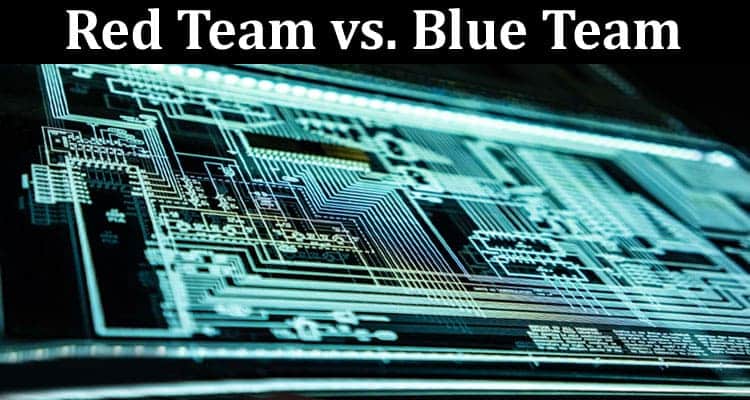In the realm of cybersecurity, understanding the intricacies of Red Teams and Blue Teams is crucial, especially for any penetration testing company looking to offer comprehensive services. These teams epitomize the perpetual battle between attackers and defenders, providing organizations with invaluable insights into their security posture.
As a penetration testing company dives into real-world scenarios, the distinction and collaboration between these teams become pivotal. This article will delve deep into what these teams are, their skillsets, and their differences, as well as the broader spectrum of ‘colored’ cybersecurity teams that a penetration testing company might employ or interact with.
What is a Red Team?
A Red Team refers to a group of cybersecurity professionals who act as attackers, emulating real-world adversaries to find vulnerabilities in an organization’s defenses before actual cybercriminals do.
What is Red Teaming and Why Do You Need It?
Red Teaming is the adversarial approach these teams adopt to challenge an organization’s cybersecurity measures. It’s vital for organizations since:
- It reveals potential weak points that could be overlooked.
- It offers an authentic assessment of an organization’s security stance.
- It tests not just the technical defenses, but also the human and process-based defenses.
Red Team Skill Set
Members of a Red Team possess a varied skill set, which includes:
- Expertise in penetration testing tools like Metasploit and Cobalt Strike.
- Knowledge of various attack vectors and methodologies.
- Abilities in social engineering tactics.
- Familiarity with physical security breaches.
What is a Blue Team?
In contrast to the Red Team, a Blue Team represents the defensive line in cybersecurity. They are responsible for detecting, thwarting, and responding to cyberattacks.
What is Blue Teaming and Why Do You Need It?
Blue Teaming involves the constant monitoring and defending of information systems. Organizations need Blue Teaming to:
- Detect and respond to threats in real time.
- Continually fortify defenses based on new threat intelligence.
- Ensure business continuity in the face of mounting cyber threats.
Blue Team Skill Set
Key competencies of Blue Team members are:
- Expertise in security information and event management (SIEM) systems.
- Skills in responding to incidents and hunting for threats.
- Familiarity with digital forensic techniques.
- Mastery over network and endpoint security solutions.
Difference between Blue and Red Team
While Red Teams simulate cyberattacks, Blue Teams defend against them. The primary differences are their objectives (attack vs. defend) and their tools and methodologies, which are tailored to their respective roles.
Benefits of Red Team/Blue Team Exercises
Simulated exercises involving both teams offer:
- Comprehensive assessment of organizational vulnerabilities.
- Realistic training for IT staff.
- Strengthened overall cybersecurity posture.
- Enhanced collaboration and understanding between the two teams.
How Do the Red Team and Blue Team Work Together?
In the world of cybersecurity, the Red Team and Blue Team may seem like adversaries, but they share a common goal: fortifying an organization’s security posture. Their collaborative efforts provide an all-encompassing view of an organization’s vulnerabilities and its capability to respond to threats. Here’s how they operate in tandem:
- Planning and Communication: Before any exercise, both teams sit down to establish rules of engagement, ensuring no critical systems are inadvertently compromised. While specific vulnerabilities may not be discussed, broad goals and objectives are set.
- Simulated Attacks: The Red Team begins its simulated cyberattacks, attempting to exploit vulnerabilities in the organization’s infrastructure. Their techniques mirror those used by real-world hackers, covering a spectrum from technical breaches to social engineering.
- Real-time Defense: As the Red Team launches its attacks, the Blue Team is on high alert, employing tools and strategies to detect, prevent, and mitigate these breaches. This real-time defense mirrors actual cyber warfare scenarios.
- Feedback and Debriefing: Once the exercise concludes, perhaps the most critical phase begins. Both teams come together for a debriefing session. The Red Team shares its methodologies, successes, and challenges, while the Blue Team discusses its detection and response strategies.
- Collaborative Learning: Mistakes, successes, and lessons learned are shared in an open environment. Both teams collaboratively discuss areas for improvement, providing insights into potential training or infrastructural upgrades.
- Documentation: Every aspect of the exercise, from initial penetration attempts to breach responses, is thoroughly documented. This documentation serves as a roadmap for improving the organization’s security measures.
- Regular Reviews: Cybersecurity is a dynamic field. As new vulnerabilities and threats emerge, Red and Blue Teams often revisit their strategies, continuously adapting to the evolving landscape.
In essence, while the Red and Blue Teams may play opposing roles during simulations, they work in harmony to achieve a singular objective: a fortified, resilient, and secure cyber environment for the organization. This synergy is vital, as it ensures that defenses are tested, refined, and proven effective against the ever-growing world of cyber threats.
Cybersecurity Color Wheel: Yellow, Green, Orange, and Purple Team
Beyond Red and Blue, other ‘colored’ teams play unique roles in cybersecurity:
- Yellow Team: Focuses on creating and maintaining security architectures.
- Green Team: Symbolizes the end-user community and is responsible for ensuring they receive proper training in cybersecurity best practices.
- Orange Team: Acts as a threat intelligence team, providing data about potential threats.
- Purple Team: A blend of Red and Blue, emphasizing collaboration between the two, sharing insights and strategies.
The dynamic world of cybersecurity demands diverse approaches, and understanding the roles of Red and Blue Teams is fundamental. As cyber threats evolve, so must our strategies, and these teams ensure that organizations stay one step ahead in the cyber arms race.


